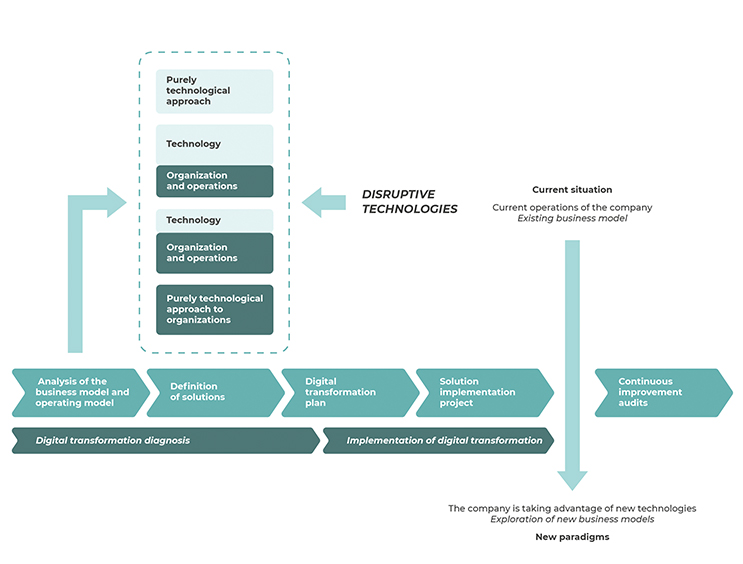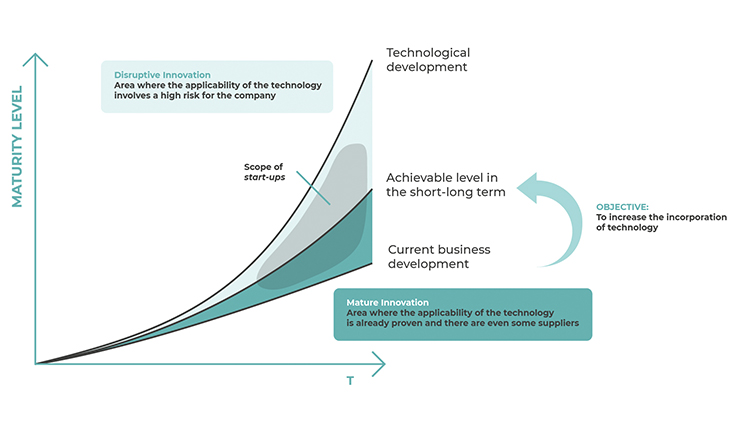Digital and innovation
The incorporation of technologies into companies is facilitating large - scale automation of the operations of the companies. Technological advances such as sensors, capacity computer, storage capacity, artificial intelligence, mobility, robotics, 3D printing, etc., enable the generation of great business value, causing disruption of models classics.
These technologies are already defining new ones customer relations, new growth scenarios, radical deficiency improvements. Technologies are the element facilitator of this process of change, but the value of the Digital transformation is taking advantage of the new models of thought, and ultimately the new business models.


The strategies of digital transformation must address the
following 4 pillars.
Let's get to work together

- Companies should only implement those technologies that are identified as the most valuable to address their specific pain points and improve their operations and processes.
- Companies need to integrate new capabilities into their ways of working and managing the information architecture.
- Perform Pilots (Proof of Concept) to quickly test technologies and validate expected value.
- At the same time, the company needs to define a roadmap to scale these initiatives across the organization and articulate a bold long-term vision. Let's get to work together
- Focus on small process improvements without addressing the major challenges of the operating model.
- Digitize processes without addressing the underlying inefficiencies.
- Ignore inefficiencies motivated by the behavior or attitude of people and not by the process itself (for example: lack of sense of ownership of a process).
- Look for high-tech solutions without evaluating the total cost of their implementation and without considering whether other simpler alternatives would do the job as well or better for less money.
- Quantify and classify all improvement initiatives based on their economic impact.
- This top-down approach helps companies focus on high-impact areas.

